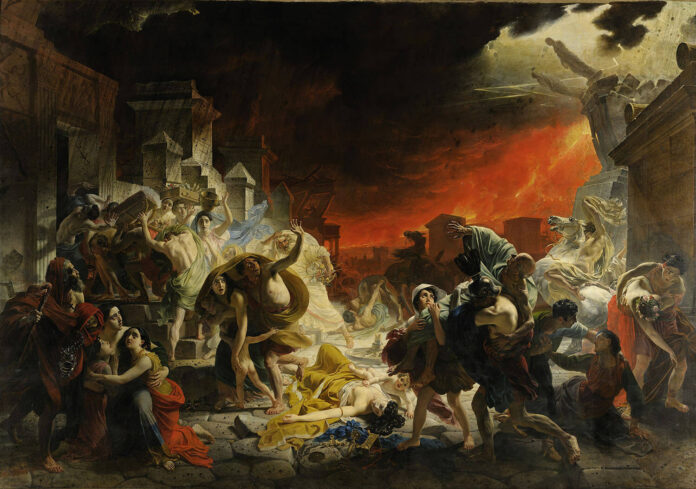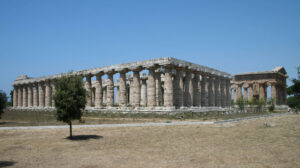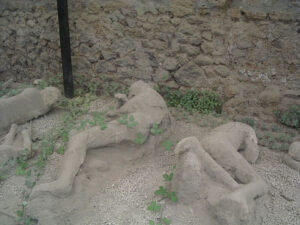
Over the past few months, various media outlets have reported cases of people returning ancient artefacts. That is certainly praiseworthy, it must be said! But that’s not all. Let’s take a look at two of these cases.

Coins Return to Paestum
The Archaeological Park of Paestum, located in the Southern Italian region of Campania, reported that a local priest came by with a bag containing 208 coins. According to the holy man, the coins had been entrusted to him in confession by a penitent who was troubled by his conscience.
Federico Carbone, a numismatist from the University of Salerno, examined the coins and concluded that 7 of them were fake. Of the 201 genuine coins, 5 are reportedly made from silver and the others from copper alloys, apart from one small aluminium medal. Except for a few modern coins, almost all of them can be divided into two groups. The first group consists of bronze coins from Paestum, mainly from the 3rd century BC to the Augustan period; the other consists of folles and follis fractions from the 4th century AD. There are also a few coins from neighbouring mints. 45 coins might prove very informative after cleaning.
How did the man come across this varied hoard? It doesn’t seem to have come from a museum burglary. It is probably safer to assume that the repentant sinner was an avid walker who liked to go poking and digging around a little deeper now and then. There’s nothing unusual about that in Southern Italy, where many people fervently consider themselves to be archaeologists …
The priest was expressly instructed only to hand over these pieces personally to the director of the Archaeological Park, Gabriel Zuchtriegel. Mr Zuchtriegel appealed to the consciences of similar ‘archaeologists’: ‘This is our appeal to all those who may be hiding archaeological material at home: if you follow this example, you will not only be returning the objects, but with them, the history of our region.’
However, the value of archaeological objects doesn’t necessarily have to be linked to the consequences of the theft, as demonstrated by our second example.

A Pompeiian Mosaic Tile Destroys a Family
In 2005, a young Canadian woman called Nicole – that’s what she calls herself, anyway – went on holiday to Italy. In Pompeii, which isn’t far from Paestum, she was overcome by an unbridled desire to own something that couldn’t be bought. She took several mosaic tiles and pieces of amphora vase with her – and she is still suffering the consequences to this day.
She sent these objects back to Pompeii – not via a priest, but by post – along with a personal letter, which is quoted in CNN’s report. Here’s what Nicole wrote in her despair: ‘Please, take them back, they bring bad luck … They have so much negative energy linked to that land of destruction.’ The Canadian is of course referring here to the eruption of Mount Vesuvius in AD 79, which destroyed and buried Pompeii and killed many of its inhabitants. ‘I am now 36,’ writes Nicole, ‘and had breast cancer twice. The last time ending in a double mastectomy. My family and I also had financial problems. We’re good people and I don’t want to pass this curse on to my family or children.’ All she wants now is ‘forgiveness from God’.
The package also contained some ‘stones’ with a confessional letter from another Canadian couple: ‘We took them without thinking of the pain and suffering these poor souls experienced during the eruption of Vesuvius and their terrible death. We are sorry, please forgive us for making this terrible choice. May their souls rest in peace.’
In this case, the Canadian tourists probably wanted to secure peace for their own existence above all else.
Superstition Helping to Protect Cultural Heritage
Could superstition help to protect ancient artefacts from theft? If you believe the reports, many such cases of restitution have been documented. In any case, in Pompeii, the true value of the returned artefacts has been recognised. They were displayed in the excavation museum, along with the enclosed letters. CNN quotes a spokesperson for the Archaeological Park of Pompeii as saying that the actual value of the restored objects was rather low. The letters, on the other hand, are of anthropological interest. Well, we can certainly believe that!
The CNN article features photos of the cursed mosaic tiles and amphora pieces.
The Archaeological Park of Paestum reported about the coins on Twitter, among other channels.
Here is the official website for Pompeii.



